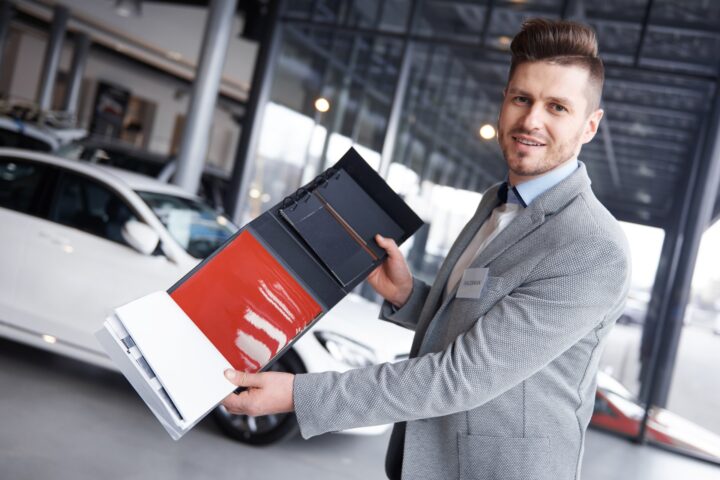Common Brochure Printing Mistakes
If you have been printing brochures for some time, you have probably seen several common mistakes that businesses make. These mistakes include using typography in a brochure that is not legible, putting too much information in one brochure, and failing to include a call to action in your print material.

Design needs attention
When designing a brochure, it’s important to make sure that it reflects your brand and the messaging you want to convey. The design should be able to tell a story about the product or service you’re offering and get people to take action. It should also be visually appealing.
Brochures are a great way to generate leads, drive traffic to your website and get customers to call you. They need to be visually attractive, informative, and have interactive features.
A good brochure design should include an eye-catching cover and a simple layout. There should be a clear message on the cover and throughout the brochure. Your company’s logo and tagline should be visible from the front.
Images should be high-resolution and clear to provide a good view of the product or service being offered. Color and font selection should also be consistent. Inconsistent color or style can make your brochure look unprofessional.
You should consider your target market and the buying cycle when designing your brochure. Segment your audience based on age, income, lifestyle, and location. These are the main factors that influence your customer’s purchase decisions. This helps you tailor your content and design to meet their needs.
Choosing the right size for your brochure is crucial. The most common sizes are 8″ x 10″, 11″ x 17″, and 9″ x 16. Consider how large you want your brochure to be and talk to your graphic designer about the best size for your brochure.
Too much information in a single brochure will prevent customers from retaining any information
A brochure is a piece of marketing material that can be distributed to prospective customers and partners. Traditionally, these are made out of paper but you can also make them digital. These are usually interactive with a variety of features.
While a brochure isn’t the most elaborate marketing tool around, it is often a powerful way to introduce a brand and its offerings to a wider audience. Its content should be carefully thought out and strategically implemented. To get the most out of a brochure, there are a few things to keep in mind.
The cover, or front, of a brochure is a crucial component. This part of the booklet aims to catch the reader’s eye and create an emotional bond. In addition to a catchy headline, this page should also contain a company name, contact information, and a call to action.
Using the right combination of text, graphics and photos is the best way to create an engaging brochure. Pictures should be chosen for their ability to be on-point and valuable to the reader. The text should be easy to read and not too cluttered. Lastly, make sure to use a standardized font and typeface. Not only will this make your document look more professional, but it will ensure that your readers aren’t having to strain their eyes to read your work.
The most important thing to remember is that a brochure is only as good as its content. Having a clear call to action and offering free samples are great ways to attract new customers.
Artboard must match up with the edges of your print design
When it comes to designing a print-worthy brochure, it’s time to up the ante. Take advantage of software and tools such as Adobe Photoshop and InDesign, and don’t be afraid to put your best foot forward. This will ensure a happy end product. While drafting up your masterpiece, heed the advice of industry experts and keep the big picture in mind.
The last thing you want is a headache when it comes to the nitty gritty. With the aid of the right tools and an eye for design, you can create a stunning piece of artwork in no time at all. For a competitive price, you can have your very own custom-printed business card, brochure, or promotional item at your disposal. Keep in mind that you may have to pay a bit more for your wares, but the results will be worth it. A well-crafted doc will get your company name in lights for years to come.
Don’t use typography
Typography is a very important part of print design. It can really affect the overall feel of a brand. When it’s bad, it can hurt a marketing campaign.
In order to make the most of your brochure, you need to know a few things about typography. For instance, it’s important to choose a font that’s simple and classic. You also want to ensure that it’s appropriate for your audience.
Choosing a font is a crucial part of the printing process. Fonts are available in many different styles and types. Some of the most common are Times Roman and Palatino. But, you should consider your budget before making your final choice.
The typeface you choose will also play a role in the look and readability of your brochure. If you’re not sure, ask a professional printer for advice.
Another thing to think about is the font size. A large and bold font can be great for certain sections of a brochure. However, it can make other sections seem too busy. Using smaller text can also be a good way to add a lot of style without taking away from the rest of the design.
Make sure that your design has a clear call to action. Usually, this will be the front of the brochure.
A good call to action will be seen, which will drive customers to take action. If your call to action isn’t visible, people won’t know what you’re promoting.
Line your fonts
When it comes to brochure printing, using fonts that readers are likely to read is essential. These can be the same fonts that people use every day. If you don’t use the right fonts, your brochure will be hard to read.
Brochures are a fun project to work on. You can treat it like a kindergarten art project. However, it does require a strategy and the right tools. There are several ways to ensure that your text flows correctly and is easily readable.
The first step is to determine the purpose of your brochure. This will determine how much print is needed and how many pictures to include. Your brochure should also be consistent with your brand identity.
Once you have established the overall purpose of your brochure, you can start deciding what type of fonts to use. You can choose from traditional letter shapes or use a sans-serif version. Sans serif fonts are a great way to create a professional look.
It’s a good idea to use a variety of colors in your brochure. Different colors can be used for the background, highlighting important ideas, and making your fonts stand out. For example, if you have dark copy, you can enhance it with a white border and a light outline.
If your brochure has more than three fonts, it’s best to keep them all simple. If you have a lot of small textual notes, you may want to add a six or seven-point font.
Don’t include a call-to-action
If you’re a marketer, you know the importance of a call-to-action (CTA). This wording urges viewers to take some action. You can do this by including a CTA in your blog post, your ad copy, or your email signature.
A good call-to-action is easy to find and easy to perform. It’s also a good idea to test out different CTAs and see which ones catch the eye of your audience. Some examples include ordering a product online, making a reservation, visiting a store, or downloading a free guide.
To get the most out of your brochure, you need to have a clear idea of your brand’s purpose, values, and mission. This will help you determine the appropriate design elements and content. For example, a real estate company may want to use a brochure that includes testimonials from past clients.
As you design your brochure, you should also consider its target demographic. For instance, a couch sitter may be interested in your product but not necessarily respond to your sexy new CTA. Thus, make sure that the main drawbacks of your offer are eliminated before you hit the print button.
While there are many factors to consider when designing your brochure, the most important aspect is to keep the design consistent. For instance, you’ll want to have a similar font and logo throughout your design. Also, use high-quality pictures that can support the text. The right images will make your brochure a more attractive and engaging experience for your prospective customers.


